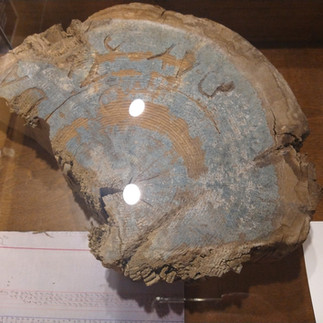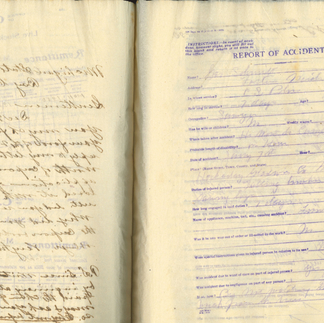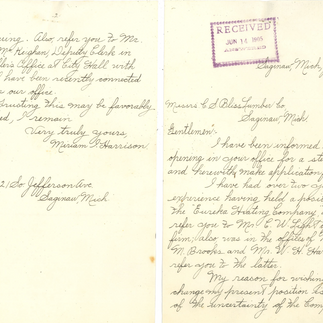At the Saginaw Castle Museum, there is a logging exhibit that houses many different log ends from the numerous companies around Saginaw during the late 1800s. Many of the log ends are housed in drawers and each log company found in the drawers comes with some paper artifacts and a passage about each company. When looking at one particular company, the C. S. Bliss and Co., I noticed that the passage was very minute and that it could use some more research. Since CMU had a collection involving the C.S Bliss Log Co. that is where I headed next!
The C. S. Bliss and Company was established in 1887 by A. T. and C. S. Bliss in
Saginaw Michigan. The C. S. Bliss and Co. employed forty men, had a mill
capacity of 6-8,000,000 feet a year, owned twenty acres of property, and had a large
retail trade in pine, hardwood, and hemlock in Midland, Gladwin, and Isabella counties
in Michigan. Aspects of the C. S. Bliss and Co. included lumber, timber, wood
delivery, lumber camps, railroads, real estate, farming, ranching and milling. I think one of the things I found very interesting when looking at these details was the fact that they were vertically integrating their business, which allowed them to not have to reach out to suppliers as much and that made their business very successful.
However, when we think of the lumber boom of Saginaw, we usually think 1840s to about
the 1870s-80s. It is much rarer to see lumber operations after this time since the boom had faded by the 1900s. Researching the C. S. Bliss information at Central Michigan’s Clarke Library, helped me find that the company established their operations later than most companies in Saginaw that were associated with the Tittabawassee Boom Companies.
Some documents I have found indicate labor and productions after the 1900s, such as applications for employment, which date from the 1900s to 1905. There were also ads in the Saginaw paper dating 1905, injury reports filed by C.S Bliss himself, and many different business correspondences. All of these documents show that the operations at this particular lumber company ran longer than others.
If I were to continue this research, I would want to look into other lumber companies and look for their timelines of operating and compare them to the C. S. Bliss and Co. It would be interesting to find more companies that were similar to the C. S. Bliss and Co. in regards to their operation time. It also would be interesting to research other lumber companies just to see how common it was to use vertical integration and to potentially see if it helped them operate longer than other companies.
This post was written by Elijah Sawyer, an intern from Central Michigan University who works partly on-site at the Castle and partly at the Clarke Library.






